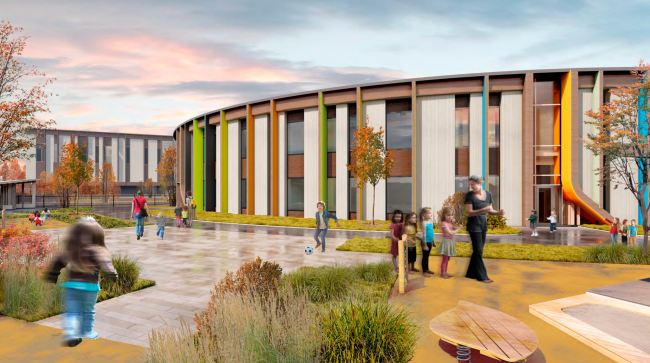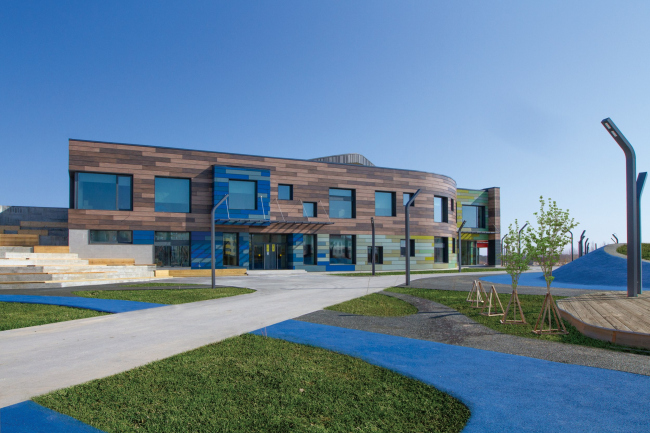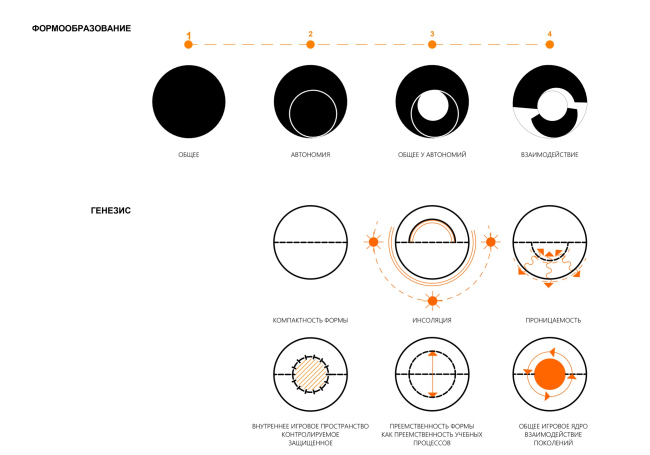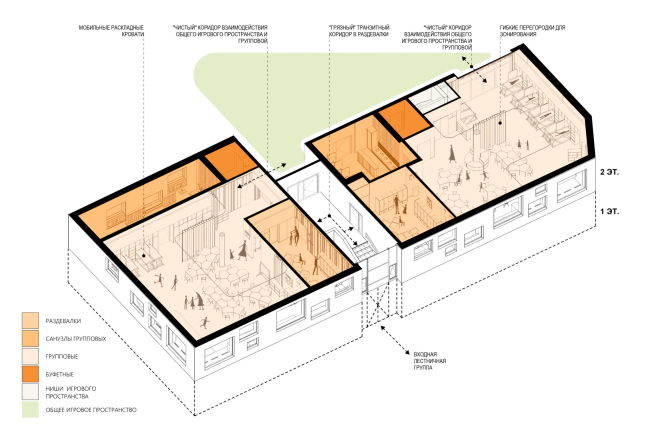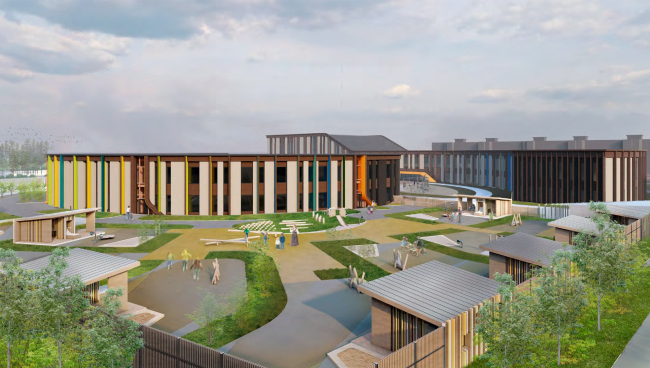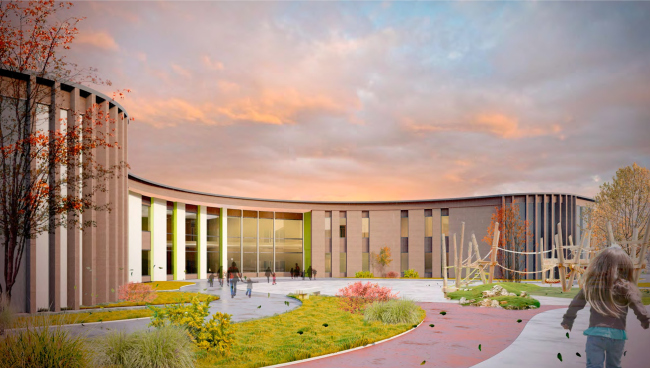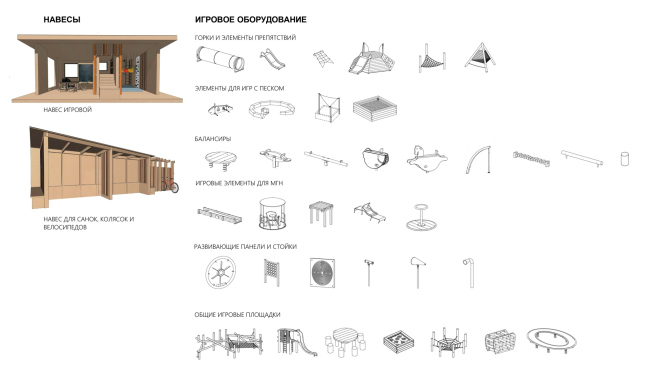|
Published on Archi.ru (https://archi.ru) |
|
| 28.11.2023 | |
|
An Educational Experiment for the North |
|
|
Alyona Kuznetsova |
|
| Architect: | |
| Anton Lukomsky | |
| Valery Lukomsky | |
| Studio: | |
| City-Arch | |
|
City-Arch continues to work on the projects that can be termed as “experimental public preschools”: private kindergartens and schools can envy such facilities in many respects. This time around, the project is done for the city of Gubkinsky, Yamalo-Nenets Autonomous District. A diverse educational and play environment, including a winter garden, awaits future students, while the teachers will have abundant opportunities to implement new practices. Educational space projects are one of City-Arch’s specialties, and it is important that in addition to working on the design assignment and the clients’ wishes, it was crystallized in connection with the growth of the three children of the company’s leaders, Anton and Natalia Lukomskiy. At some point in their lives, most parents become “connoisseurs” of the nuances of upbringing and education, but here I would like to emphasize: in addition to the inevitably varied parental experience of communicating with educational organizations, in which from time to time you want to correct something, and sometimes radically change everything about them to make life and growth easier not only for you, but also for other children and parents – Natalia Lukomskaya also has professional experience as a participatory educator working with adolescents under the program “Art-lab”, developed together with Goethe-Institut. The kindergarten in GubkinskyCopyright: © City-ArchFor the first time it was possible to apply the family’s entire expertise in work with a kindergarten in Beloyarskoe – a state-run kindergarten, but nonetheless experimental. We wrote about it in detail at the project stage in 2014, and then again after its recent implementation. The unconventional approach took time for approvals, but the result surprised many people, including the Governor of the Yamalo-Nenets District, who came to the opening and then gave instructions to build similar kindergartens and schools in the region. Kindergarten in Beloyarsky.Copyright: City-ArchAs a result, City-Arch landed a commission for ten educational institutions for the Yamal-Nenets Autonomous District, but undertook to design six in four cities: Salekhard, Muravlenko, Tarko-Sale and Gubkinsky. We plan to tell you about all of them in succession. There are plans to build a school and a kindergarten in the town of Gubkinsky. The circumstances are similar to Beloyarskoe: a government commission, near-extreme climatic conditions, and relatively greater creative freedom. The town, which lives by oil and gas production, is located 200 kilometers north of the Arctic Circle. In 2006, the temperature here dropped to -62 Celsius. Children spend a significant part of the school year indoors, in polar night conditions, and parents try to drive them by car to the very entrance to the kindergarten – all of this is relevant to the concept. The kindergarten in GubkinskyCopyright: © City-ArchIncreasing seed germination The main goal of City-Arch is to create an environment in which all children would feel comfortable and safe, regardless of their temperament, personality or academic preferences. Feeling safe is the foundation for development, learning and progress, but this feeling of safety is achieved, of course, by a set of things that is far more complex than just strong walls and a roof over your head. The architects focus on how a child can learn better, and they build the environment accordingly, predetermining the amount of communication, and mutual exposure of children of different ages, fueling their interest in one another. Another task is to reduce unused space, which is a common issue for many schools with an excessive number of classrooms. The school and kindergarten will be built in a new neighborhood at the eastern end of the city, not far from the main thoroughfare of the city – Mira Avenue, as well as the Pyakupur River. The original idea of City-Arch visualizes the idea of mentoring and succession of generations: the plans of the school and kindergarten buildings are similar, yet independent from one another; they exist within the boundaries of a single circle and are connected by a common core – a playground where the children can meet up and learn from one another. The kindergarten in GubkinskyCopyright: © City-ArchThe land sites of the school and kindergarten, located next to each other, could not be merged due to regulations, and the shape of the plans was slightly adjusted: while according to the original idea the school “embraced” the kindergarten as a senior would embrace junior, in the final version one of the protrusions – “horns of the moon” – was straightened. The common street space has been preserved, but it will also be divided by a fence – currently, the architects are working on options that will make it as transparent as possible. 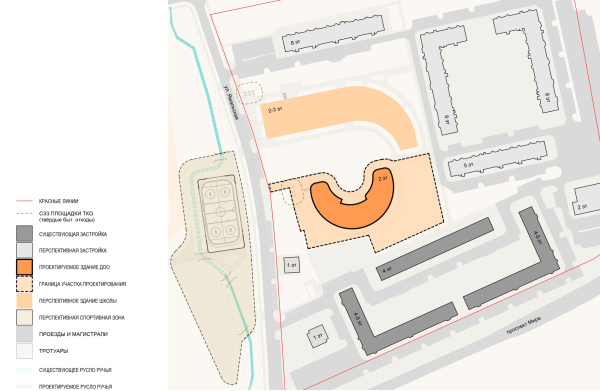 The kindergarten in GubkinskyCopyright: © City-Arch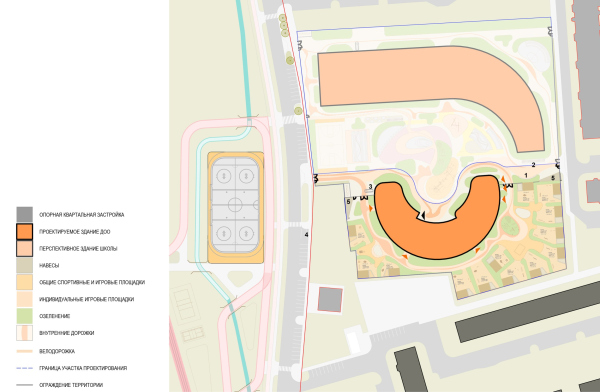 The kindergarten in GubkinskyCopyright: © City-Arch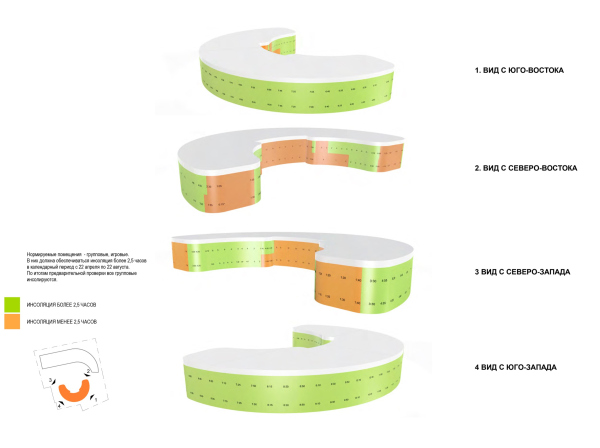 The kindergarten in GubkinskyCopyright: © City-Arch The kindergarten in GubkinskyCopyright: © City-ArchWinter garden The double-height play space becomes the semantic and spatial center of the kindergarten. It extends to the inner arc of the “bagel” and is connected to the outside world and the school by the membrane of a large stained glass window. The height of the window sills here is a comfortable 40 cm for children. The space is deliberately a little oversaturated with functions and possibilities: if all the ideas can be realized, the children will have choice and variety throughout the year.  The kindergarten in GubkinskyCopyright: © City-Arch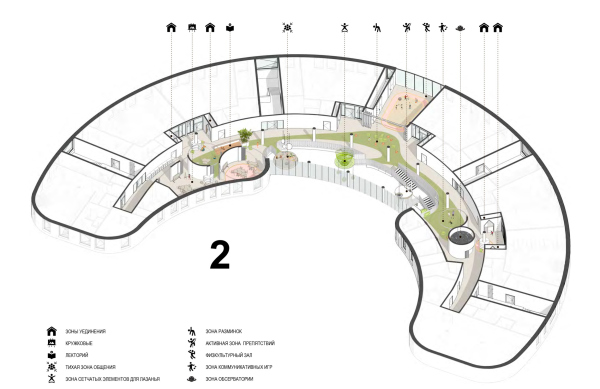 The kindergarten in GubkinskyCopyright: © City-Arch The kindergarten in GubkinskyCopyright: © City-ArchFirst of all, the most desirable and inaccessible things during the polar night – greenery and light – are supposed to be available here in abundance. A winter garden becomes a background for games: architects plan to make a relief, plant large trees, shrubs and grasses. Special lamps borrowed from space technologies will allow them to grow. Living plants will be complemented by artificial lawn and wooden glued columns in the form of stylized trees. The garden is filled with objects suitable for secluded recreation and group interaction, and it resembles a good playground in a park: there is a slide, a bridge, a playhouse, and the possibility of setting up a sandbox inside the building is currently being discussed. The planetarium pavilion is expected to show not only the starry sky, but also, for example, in winter – projections of the summer forest with birdsong and sun glare. For those children who like to regain their strength in solitude and silence, there are cozy houses standing in recessions – these houses are included in the architectural solutions, and, therefore, there is reason to hope that it will be impossible to cut them in the process of implementation. 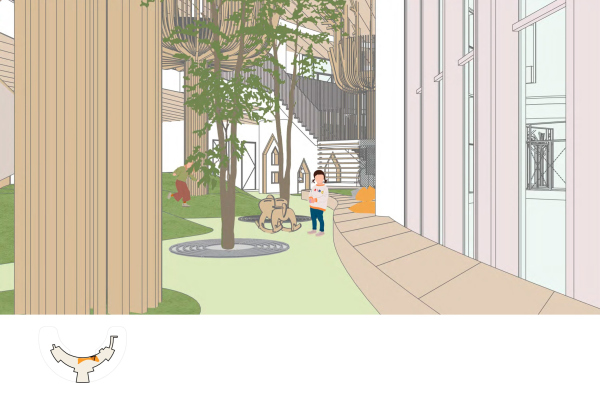 The kindergarten in GubkinskyCopyright: © City-Arch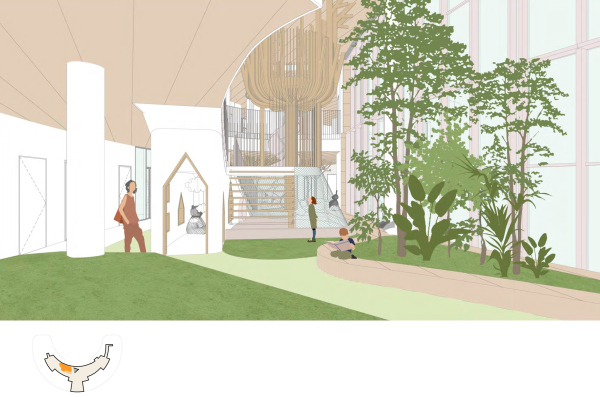 The kindergarten in GubkinskyCopyright: © City-Arch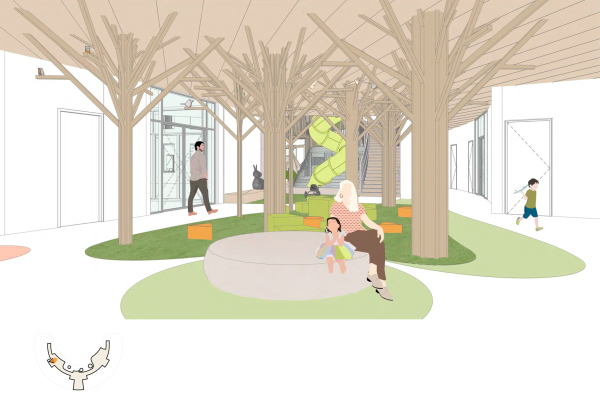 The kindergarten in GubkinskyCopyright: © City-Arch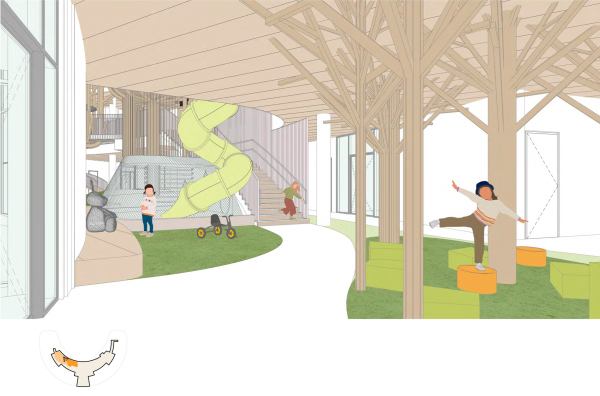 The kindergarten in GubkinskyCopyright: © City-Arch The kindergarten in GubkinskyCopyright: © City-Arch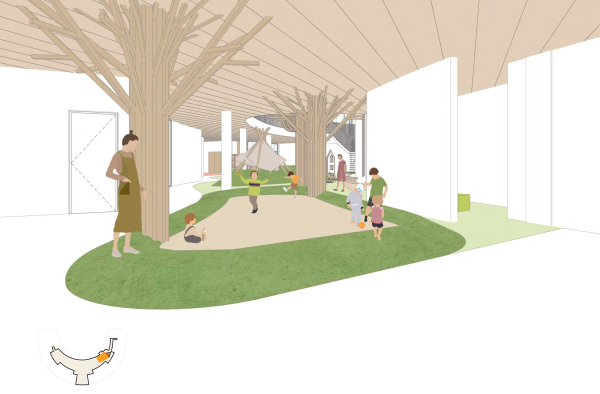 The kindergarten in GubkinskyCopyright: © City-Arch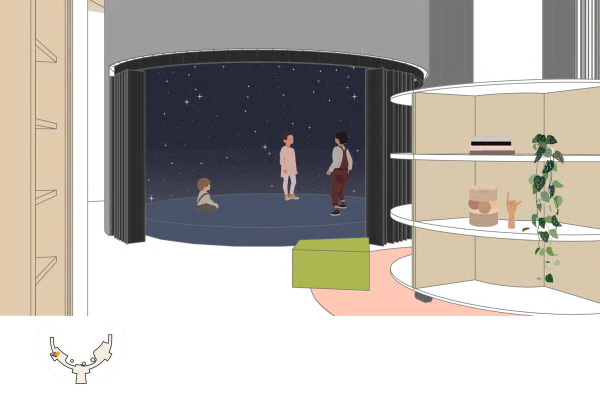 The kindergarten in GubkinskyCopyright: © City-ArchThe islands of the upper level of the playground can be accessed from the second floor: slides, tree houses, hammocks and wicker mazes are located here. This is also where the free-plan circle areas are woven in. This organization of the space masks the two-story structure of the building and creates an “outdoor” feel. 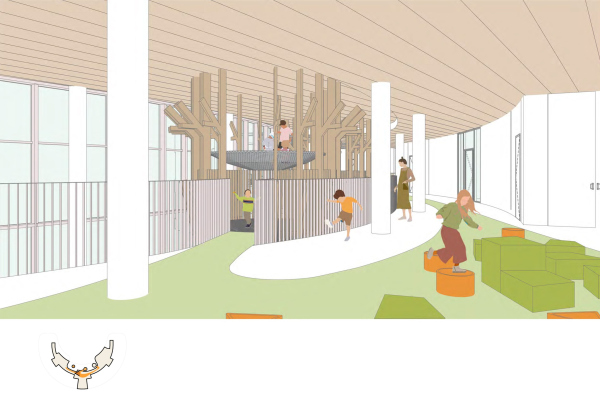 The kindergarten in GubkinskyCopyright: © City-Arch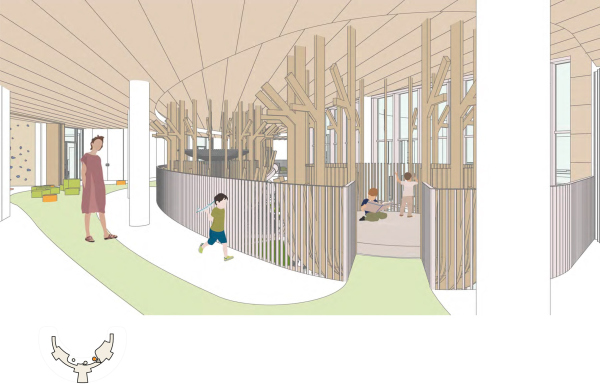 The kindergarten in GubkinskyCopyright: © City-Arch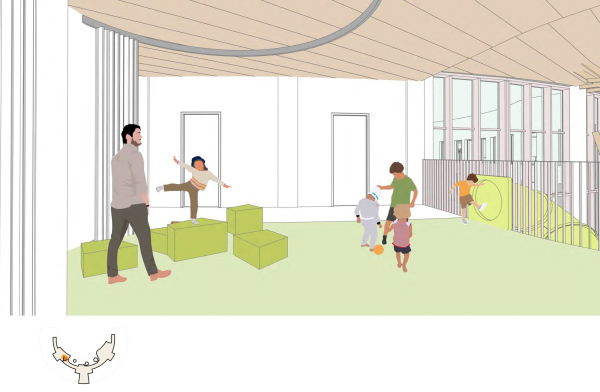 The kindergarten in GubkinskyCopyright: © City-Arch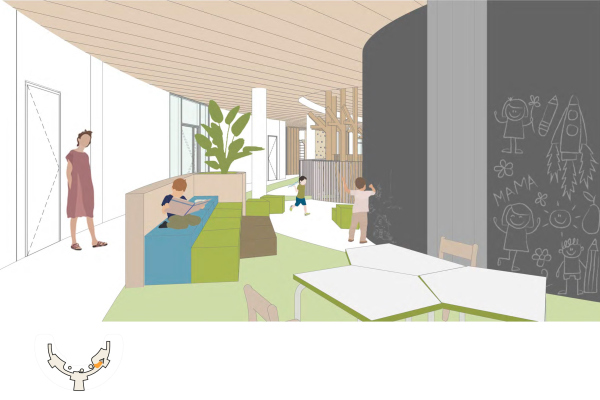 The kindergarten in GubkinskyCopyright: © City-Arch The kindergarten in GubkinskyCopyright: © City-Arch The kindergarten in GubkinskyCopyright: © City-ArchWith the help of partitions, the playroom can be zoned for various tasks. For example, the amphitheater is oriented towards the music room, which is closed on regular days, but on holidays it turns into a stage where kids give concerts and show theatrical performances to their parents. Above the music hall, there is a sports hall. In the “horns” of the crescent of the kindergarten building there is a canteen and a swimming pool; in the center, there is a conventional “front” entrance and a buffer zone for parents, where they come on the days of events. 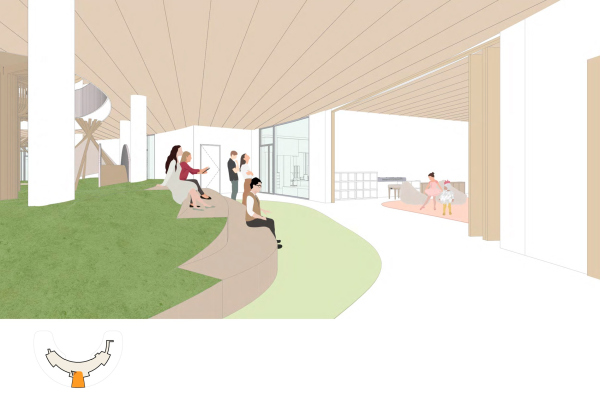 The kindergarten in GubkinskyCopyright: © City-Arch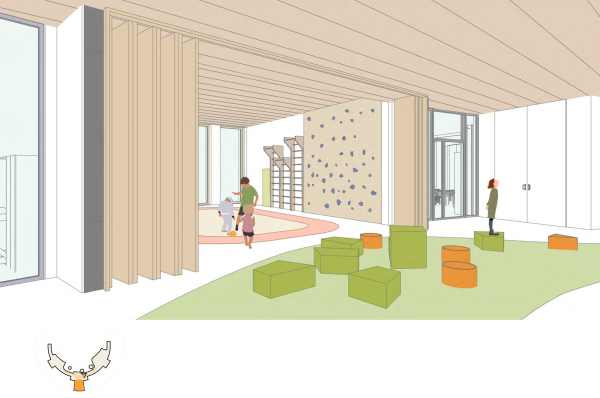 The kindergarten in GubkinskyCopyright: © City-Arch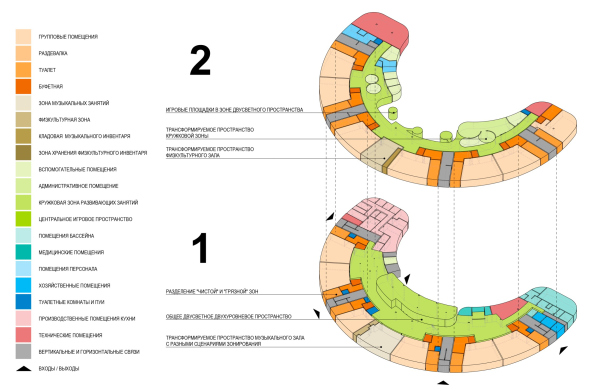 The kindergarten in GubkinskyCopyright: © City-Arch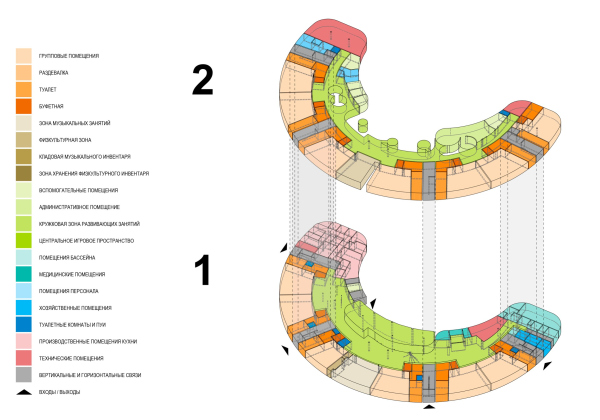 The kindergarten in GubkinskyCopyright: © City-Arch The kindergarten in GubkinskyCopyright: © City-Arch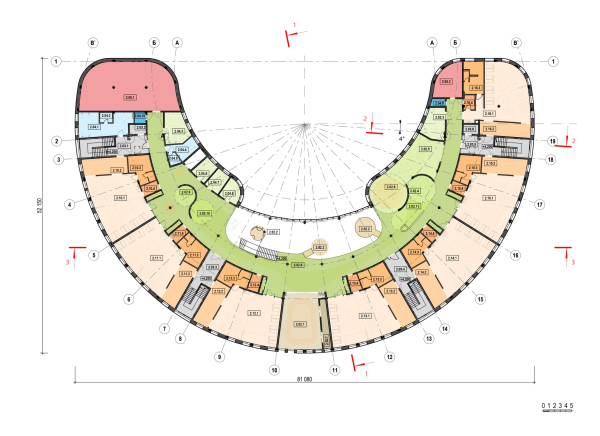 The kindergarten in GubkinskyCopyright: © City-Arch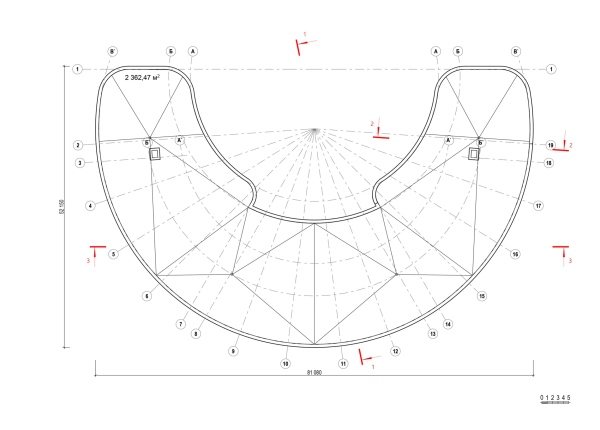 The kindergarten in GubkinskyCopyright: © City-Arch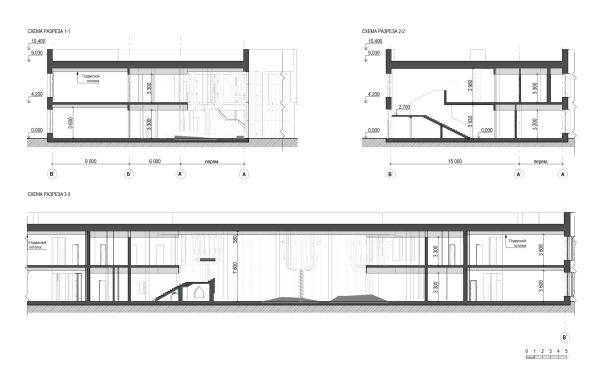 The kindergarten in GubkinskyCopyright: © City-ArchCell of society Group cells gather around the play space – the younger ones on the first floor, the older ones on the second floor. From these cells, you can always see what is going on in the center. The rooms are oriented to the south, each with its own exit to the street: parents and children coming from the street do not cross through the play space, leaving it clean. Mobile partitions make it possible to utilize the space of the sleeping area and changing rooms during games and activities during the day. Bunk beds disappear into niches, freeing up space. Lightweight and mobile furniture helps to adapt the room for activities, as well as small rearrangements every 3-5 weeks that get your child excited about exploring the space. These solutions, as well as moving away from a corridor system in favor of a large “playground” allows for a smaller building footprint, increasing the ratio of play space per child. The kindergarten in GubkinskyCopyright: © City-ArchShining or Scandinavia? For the facades, the architects developed several solutions that relate to the context: one, for example, uses panels with a “chameleon” coating, which creates a sense of iridescent cold glow when moving around the building, while the other uses more wood texture and bright color. 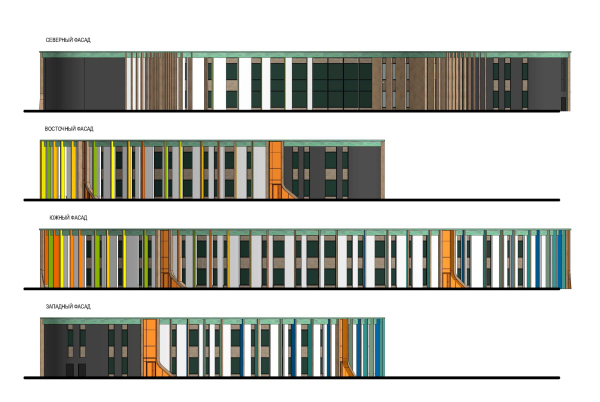 The kindergarten in Gubkinsky. THe architectural solutions of the facades. The “Scandinavia” versionCopyright: © City-Arch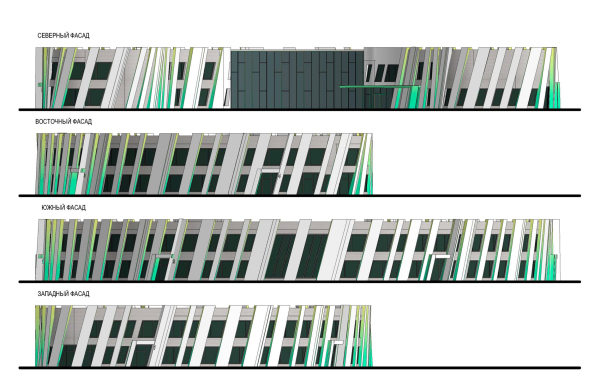 The kindergarten in Gubkinsky. THe architectural solutions of the facades. The “Shining” versionCopyright: © City-Arch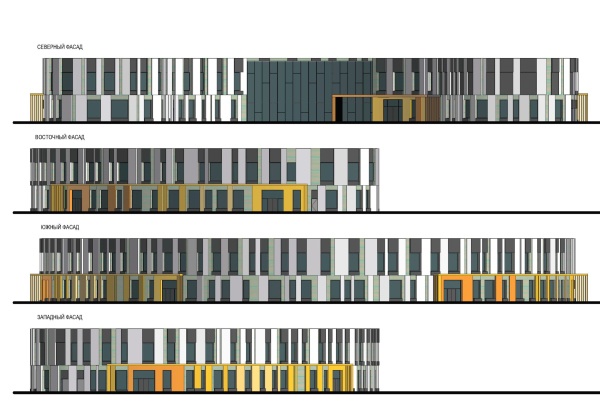 The kindergarten in Gubkinsky. THe architectural solutions of the facades. The “Chekers” versionCopyright: © City-Arch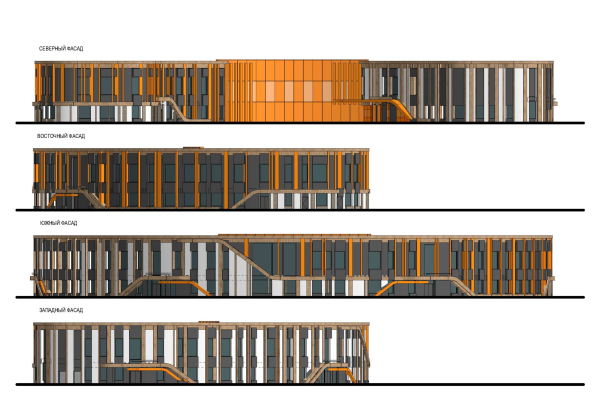 The kindergarten in Gubkinsky. THe architectural solutions of the facades. The “Lamellae” versionCopyright: © City-ArchAs was already mentioned, three kindergartens will be built in Gubkinsky under the same City-Arch project, and all the three directors chose the Scandinavia solution without any hesitation. The volume of the building is pulled together by the “hoops” of the bearing floors with wood cladding, and vertically the floors are united by light-colored pilasters of varying width. A clear rhythm is set by lamellas, painted in rich colors on the sides. Bright orange stained glass windows and invitingly curved lamellae accentuate the entrance groups. Since the façade will be viewed at night for a significant part of the time, the architects were asked to present no less than 20 illumination options. They chose linear RGBW addressable luminaires, which can be controlled by middle and high school students as part of the project activities, setting different scenarios and stories. The kindergarten in GubkinskyCopyright: © City-ArchThe kindergarten in GubkinskyCopyright: © City-ArchPlatforms Each group has a playground of its own with a shade canopy, as well as shared sandboxes and play equipment. All these areas are united into a single complex by natural colors and materials of small architectural forms. Artificial terrain and colored pavements help to bring variety. The landscaping uses native plants that children can learn about as part of their outdoor activities. Construction of the first kindergarten in Gubkinsky is scheduled to begin in the summer of 2024. The kindergarten in GubkinskyCopyright: © City-Arch***
Natalia Lukomskaya says that the Ministry of Education prepares programs of a fairly high level, but the vast majority of schools do not use them, continuing to operate in the old way, and the changes are slow to come. Accordingly, a good building is not a guarantee of good education or a quantum leap: if the teaching staff does not know how to use the possibilities of the environment, then soon common spaces will be divided into classes, and hexagonal desks will be arranged in straight rows. This is why the design of schools and kindergartens, especially public ones, must be accompanied by a dialog with teachers: that is why the architects organize special seminars for teachers, and soon they are planning to prepare a methodological manual on the use of new types of kindergartens as well as on their design. |
|
